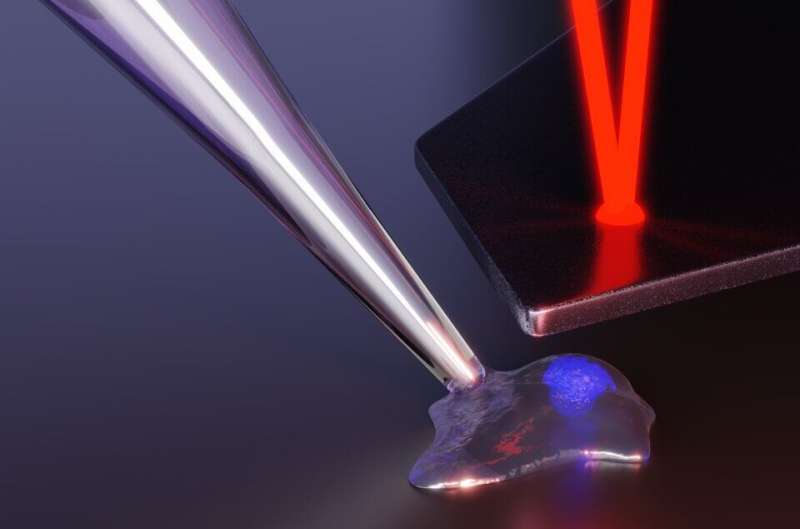
It’s a well-established fact that every cell in your body responds to physical touch. They don’t all react in exactly the same way—a cell in your spleen won’t jump like a frightened cat if it gets poked by a needle. But throughout the human body, the physical materials and structures that envelop and support cells as they grow and go about their daily tasks play a large role in their health and behavior.
For example, it’s impossible to get complex biological structures like blood vessels and nerves to grow in a Petri dish; they need the right combination of external structures for support. The hairs inside your ears that translate vibrations to electrical signals sent to your brain are sensitive to even nanoscale movements. And various cells within the gut sense when your stomach is full to fulfill their digestive duties.
Despite knowing that touch and physical force play an important role in so many aspects of biological processes, little is known about how it all works. Different cells have different pathways for sensing and transmitting signals generated by touch. And growing cells outside of the body that can be placed in some sort of experimental setup capable of measuring these inputs and outputs is not easy.
In a paper published online February 16 in the journal Proceedings of the National Academy of Sciences, mechanical engineers and neurobiologists from Duke University make a dent in that knowledge gap.
Using atomic force microscopy and electrophysiology, the researchers measure the upper and lower limits of the functions of four proteins that emit electric signals in response to physical stimuli. The results show a wide breadth in their abilities, opening new questions about how specialized touch-sensitive cells manage to operate as well as they do.
“Every sensory system is limited by the amount of background noise it has to overcome to detect a signal. Our eyes can sense light energy very close to this limit, making them extremely sensitive to even single photons,” said Michael Young, a research scientist at Myrobalan Therapeutics who conducted the research as a Ph.D. student at Duke. “But even with cells loaded up with these proteins, I needed to add up to a billion times more energy than that threshold to generate any detectible signal. It was pretty surprising, actually.”
The four proteins that Young investigated were members of two cellular families—Piezo1 and Piezo2, and TREK1 and TRAAK. Piezo2 is found mostly in sensory cells, like those in the skin that generate touch-sensitive signals for neurons to carry to the brain, while it’s close relative Piezo1 is found in low levels in cells that help regulate automated biological processes like blood pressure and cell migration. TREK1 and TRAAK are both found mostly in the nervous system, playing an unknown role that help transmit signals, and can be activated by many different types of stimuli other than touch.
To measure the boundaries of these cells’ abilities, Young worked with Jörg Grandl, professor of neurobiology at Duke, to grow cells filled to the brim with one of the proteins in question. He then went to Stefan Zauscher, professor of mechanical engineering and materials science at Duke, to figure out how best to measure their response when poked and prodded.
Zauscher set the team up with an atomic force microscope. With a cantilever beam barely visible to the naked eye, the machine can apply forces as small as 10 piconewtons—a force on the order of 10 million times less than a feather resting on the back of your hand.
For each protein-filled cell, Young measured the minimum amount of force required to elicit a detectible signal, the most amount of electrical activity it could generate and the general behavior of the signal. For example, whether it was short and intense or long and mild.
Surprisingly, Young found a large range in their reactions, despite the proteins’ similarities. Some cells emitted electrical responses almost instantaneously while others had a delay more than 10 times longer. There was also a wide range of sensitivities, begging the question of what other factors might play a role in how these proteins help regulate the body’s biochemical activities.
“We simply loaded these cells up with proteins to ensure we got a response, but their specific placement on the cell might be more important to how they work, or their structural environment might play an important role,” Young said. “It would be interesting to compare these results to cells that already feature these proteins, because they might have evolved to have the right number of them in exactly the right places to optimize their responses.”
Ken Kingery, Duke University

